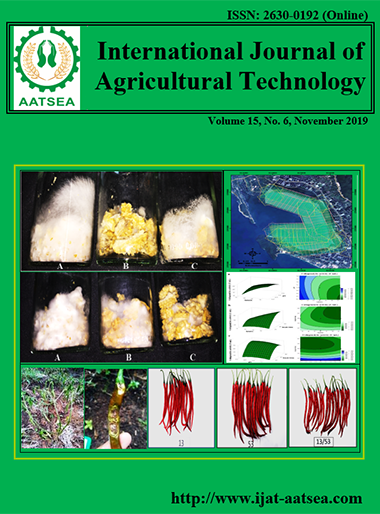The carbon footprint assessment from electricity of undergraduate students at Mahidol University Amnatcharoen Campus for Eco University
Main Article Content
Abstract
The assessment of carbon dioxide equivalent emissions per year in study class resulted to assess the students for a total of carbon dioxide emissions at 1,784.32 ton CO2/Capital, with an average of 1.64 ton CO2 /Capital/person. The consideration by year class of study found that the year class with highest amount of carbon dioxide equivalent emissions was the 2nd year,which averaged 767.52 ton CO2/Capital including 2 programs: Bachelor of Public Health Program and Bachelor of Science Program in Agriculture. The knowledge on electrical energy usage of the students showed the most of aware in “maintenance of electrical appliances helps to save energy”, and followed by the knowledge that “put too many stuffs in the refrigerator will cause to consume more power than usual” and “electricity generation in Thailand does not use fuel”. The behavioral aspect found that the electrical energy usage behavior of students was recorded at often level consume. The information obtained from this research is expected to be a guideline for creating a policy to conserve electrical energy and reduce carbon dioxide emissions at Mahidol University Amnatcharoen Campus.
Article Details

This work is licensed under a Creative Commons Attribution-NonCommercial-NoDerivatives 4.0 International License.
References
Chantakham, K. (2006). Campaign for conservation of students and personnel of Dhurakij Pundit University. (Master’s Thesis). Pundit University, Thailand.
Greenhouse Gas Management Organization (Public Organization) (2010). Guidelines for assessment of carbon footprint of organization. Bangkok: National Metal and Materials Technology Center, National Science and Technology Development Agency.
Khumsap, R. (2016). Promotion of carbon footprint in Phetchabun Province to aim for a low carbon city Phetchabun. (Thesis). Phetchabun Rajabhat University, Thailand.
Marans, R. W. and Edelstein, J. Y. (2010). The Human Dimension of Energy Conservation and Sustainability: A Case Study of the University of Michigan's Energy Conservation Program. International Journal of Sustainability in Higher Education, 11:6-18.
Ratha, C. (2011). Preparation of specific requirements in assessment of carbon footprint of tapioca starch products. (Master’s thesis). Khonkaen University, Thailand.
Srisa-at, B. (2002). Preliminary research, 5th Edition, Bangkok, Suviriyasarn Publishing House.
Thanacharoenchanapas, K. (2015). Global climate change: Effects and responses of ecophysiology. Phimphalak. (Thesis). Naresuan University, Thailand.
Usuparat, P. and Phuengrasamee, H. (2014). Assessment of Carbon Footprint of Organization of Thammasat University Rangsit Campus. Journal of Science and Technology, 22nd Year, Issue No.1, January - March 2014.
Yamane, T. (1973). Statistics: An Introductory Analysis. Third edition. New York: Harper and Row Publication.


